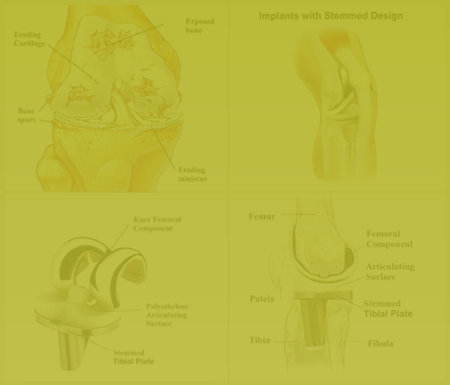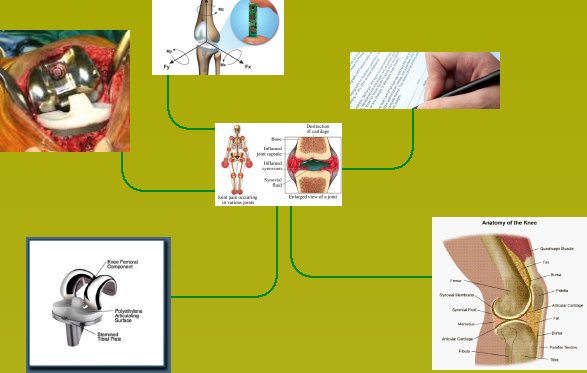
By Gelareh Eslamian

The largest joint in the body is the knee joint. The knee is one of the strongest, heaviest, and largest bones in the human body
and plays a significant role in humans’ lives by providing agility and support to the body by carrying more than half of the body’s
total weight. It, basically, functions as a hinge whereby the lower end of the femur – the thighbone, rotates on the upper end of
the tibia – the shinbone, and patella – the kneecap, thereby facilitating the forward and backward movement of the lower leg. A healthy
knee, thus, comprises of a thick cartilage that covers the ends of the thigh and shinbones. This cartilage is thick and slippery so
as to help the simple movement of the bones touching each other. Another body component called the ligaments (flexible fibrous bands),
help in holding the knee joint together and keep it in place especially during the movements such as bending or straitening of the
knee (14).
Conditions Leading to Knee Implant
Any medical or non-medical conditions that disrupt the knee functionality will cause the knee joint to wear out or destroys the cartilage
covering it. As in the absence of the protective cartilage, the bones rub against each other thereby becoming worn out in the process
and requiring medical intervention(4).
There are several medical and non-medical related reasons, which cause such deterioration of
the knee joint leading to conditions of knee implant. Arthritis or any wear and tear of the cartilage because of the age or any other
non-medical reasons such asaccidents or sports injury or incorrect loading on the knee joint are known as some of them. Replacing
the original knee with an artificial one becomes inevitable when the deformity or damage to the knee is so serious that preserving
the natural joint through surgery becomes absolutely impossible and artificial implant is the only logical option available. For example,
when the thick layer covering the knee joint called the cartilage, becomes thin due to wear and tear, it gets worn out and torn exposing
the bones and as they rub against each other every movement causes awful pain(10).
What is knee implant surgery?
In a knee replacement surgery, the worn out ends of the bones and torn cartilage are removed and replaced with new and artificial
parts made of metals and plastic. A single curved part of firm metal is used to substitute the femur and a flat metal is applied to
restore the tibia and fixed to the bone. Also, a plastic bearing, which is placed inside the metal plates, plays the role of the hard
cartilage. The interlocking parts of these artificially implanted metal and plastic parts are adjusted to give flexibility and constancy
to the knee joint and it works accurately like the natural biological system of the knee (12).
Candidate for Knee Implant
According to the health care professionals, the best candidates for such an implant include those who often complain of prolonged
severe pain in the knee joint, patients suffering from osteoarthritis, patients whose knees are severely damaged due to accidents
or those with sports related injuries. In those cases damage has been done to the cartilage or other ligaments of the knee and surgery
is the only option left. It also includes those who are relatively older in age (above 60 years) although people born with deformities
in the knee could also be considered an equally good candidate for knee implant. Besides, if the pain is so severe that it restricts
the regular activities like walking or climbing stairs, then he/she may also be considered a prospective patient irrespective of the
age. However if all the other treatments not succeed to reduce the patient’s pain in the knee joints then this surgery might be recommended.

